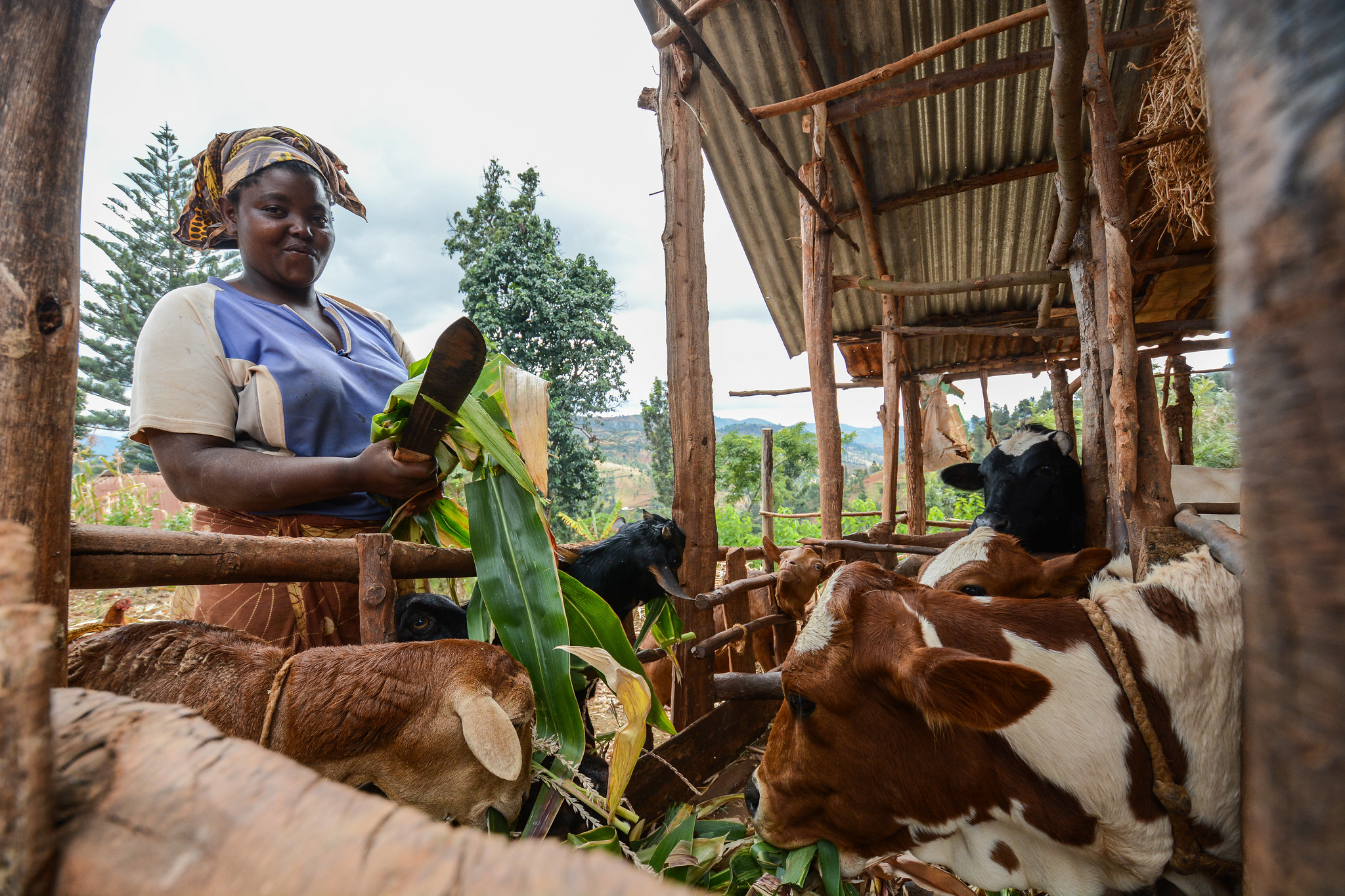Diversification and food security in crop-livestock farming systems of Singida Region, Tanzania

Written by: Ntengua Mdoe, Gilead Mlay, Aida Isinika and Gideon Boniface
Diversification is a key strategy for coping with risks associated with climate change and variability among households in Africa’s semi-arid areas. The extent of diversification varies across households, but the crop and livestock enterprises undertaken comprise of at least one crop and one livestock species. As found in a recent APRA study, the nature of crop-livestock diversification in the farming systems of the semi-arid Singida Region, central Tanzania, has varying impacts for farmer food security. The research saught to answer the following policy-relevant questions: (i) How important is diversification in the crop-livestock farming systems of the Singida Region? (ii) What are the prominent crops and livestock species diversified by households in these farming systems? (ii) What is the degree of risk associated with different crop-livestock portfolios? (iii) How does crop-livestock diversification affect food security?
Importance of diversification
Evidence from the APRA findings show that diversification is widely practiced in Singida Region. Ninety-two per cent of 600 sample households studied were found to diversify two or more crops with at least one livestock species. Only 8 per cent diversified one crop with at least one livestock species. The five top ranking crop-livestock portfolios taken up by households are: (i) Maize, sorghum, sunflower, cattle, goats and chickens; (ii) Maize, common beans, cattle, goats and chickens; (iii) Maize, sunflower, cattle, goats and chickens; (iv) Maize, sorghum, cattle, goats and chickens and (v) Sorghum, sunflower, cattle, goats, sheep and chickens.
Prominent crops of the portfolios (in terms of percentage of sample households practicing them) were maize, sorghum and sunflower. The inclusion of maize in four of the portfolios is of note because it is drought prone. This is likely because maize is a staple food crop preferred by most households and thus, farmers continue to grow it despite the risk of not harvesting anything in the instance of low rains. Sorghum and sunflower are drought-tolerant crops; their prominence in the top-ranking portfolios may be strategic to reduce the risks associated with climate change and variability.
The prominent livestock species in the five top-ranking crop-livestock portfolios were cattle, goats and chickens. The prominence of cattle, which are highly vulnerable when grazing grounds dry up during prolonged droughts, is due to the fact that cattle are used as a store of wealth and considered more prestigious than goats, sheep and chickens. Chickens and goats were kept largely as a farmer survival strategy – in case of drought and the impacts on cattle. Unlike cattle, chickens and goats are relatively less affected due to their ability (chickens) to scavenge and (goats) to browse on shrubs when there is no grass.
Risk associated with crop-livestock portfolios
The coefficient of variation (CV) measure was used as an indicator of the degree of income risk associated with different crop-livestock portfolios. The crop-livestock portfolio comprising maize, sorghum, sunflower, cattle, goats, sheep and chickens was associated with the lowest risk (i.e., lowest CV), while the portfolio comprising maize, common beans, cattle, goats and chickens was associated with the highest degree of risk (i.e., highest CV). Apparently, the crop-livestock portfolio associated with the lowest risk includes maize and cattle, which are sensitive to climatic shocks, especially droughts. However, the risk associated with maize and cattle is downplayed by the inclusion of sorghum, sunflower, goats and chickens, which are drought-tolerant.
Effects on household food security
Households with higher levels of food security were associated with higher levels of crop-livestock diversification, suggesting a positive correlation between the two. This may largely be due to dietary diversity from the crop and livestock species in diverse portfolios. Where household food access depends largely on own production, crop-livestock diversification provides households with the products they cannot afford due to high market prices.
Conclusion and policy implications
The APRA study findings suggest that more efforts are needed to promote sorghum and other drought-tolerant and early-maturing crops over maize, which is drought-prone, in semi-arid areas. This should go hand-in-hand with efforts in crop breeding and improvement programmes to develop drought-tolerant maize varieties that meet consumer preferences. Goats and chickens that can thrive under critical drought conditions should also be promoted. The prominence of cattle, which are less resilient to drought and extreme heat conditions, calls for interventions to reduce risk in cattle production. Such interventions could include water harvesting and storage, as well as climate-smart cattle breeding.
Photo credit: CIAT/Georgina Smith
